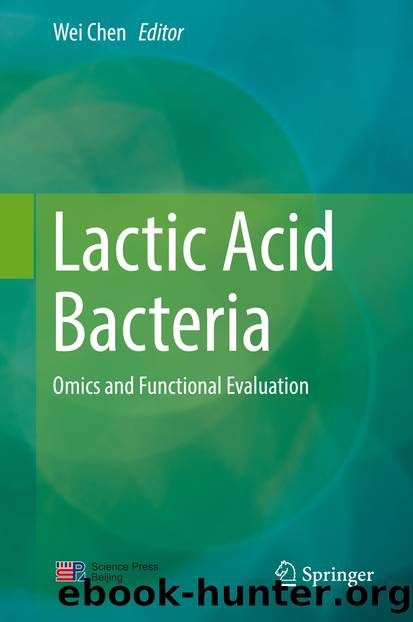Lactic Acid Bacteria by Unknown

Author:Unknown
Language: eng
Format: epub
ISBN: 9789811378324
Publisher: Springer Singapore
7.4.2 Mouse Model
7.4.2.1 Variety Strains and Biological Characteristics
Mice are widely distributed all over the world. More than 1000 inbred lines and independent outbreeding groups have been formed after long-term artificial feeding and selective breeding. Mouse, as an experimental animal, has been the most frequently used and thoroughly studied mammalian experimental animal in the world since the seventeenth century. The strains of mice are mainly inbred lines, closed populations, and mutant lines. Among them, there are about 250 inbred lines and more than 350 mutant lines.
About 44% of inbred strain A mice aged 6 months showed lupus erythematosus cells and antinuclear antibodies. It is deficient in complement C5 and is sensitive to X-ray irradiation. Compared with other inbred mice, BALB/c mice had the highest blood pressure and spontaneous hypertension and were susceptible to chronic pneumonia. CBA strain mice contain CBA/Br, CBA/Ca, CBA/J, CBA/St, CBA/H, and other subspecies. They have high blood pressure and are highly sensitive to vitamin K deficiency. AKR is deficient in complement C5, which is easy to induce immune tolerance. It has low reproductive rate in common environment but good reproduction in aseptic and non-specific pathogen (SPF) environment and short growth period. C57BL/6 mice are more sensitive to Mycobacterium tuberculosis and are easy to induce immune tolerance. C3H mice include C3H/Bi, C3H/He, C3H/HeJ, C3H/St, C3HeB/FeJ, C3H/DiSn, C3H/Sf, and other subfamilies. DBA/2 strain mice were sensitive to pertussis histamine susceptibility factor and resistant to plasmodium and typhus. The content of serum immunoglobulin in NZB strain mice was remarkably larger than that in other strain mice. The specific manifestation was that the content of IgM and IgG increased significantly, and the mice were susceptible to autoimmune hemolytic anemia. Several classical models of the mutant line include nude mice (hairless epidermis, T lymphocytes are damaged, and cellular immunity is weak due to thymic dysplasia), dwarf mice (infertile, congenital hypoperfusion of auxin and thyrotropin), diabetic mice (at 3–4 weeks of age, blood glucose increases significantly, abnormal fat masses can be found in subcutaneous tissue of the subaxillary and the groin), etc. The closed colony mice were KM mice, CFW mice, ICR mice, CFW mice, NIH mice, etc.
Download
This site does not store any files on its server. We only index and link to content provided by other sites. Please contact the content providers to delete copyright contents if any and email us, we'll remove relevant links or contents immediately.
The Bone Broth Miracle: How an Ancient Remedy Can Improve Health, Fight Aging, and Boost Beauty by Ariane Resnick(16446)
How to Be a Bawse: A Guide to Conquering Life by Lilly Singh(7154)
The Fat Loss Plan by Joe Wicks(4620)
The Ultimate Bodybuilding Cookbook by Kendall Lou Schmidt(3706)
A Jewish Baker's Pastry Secrets: Recipes from a New York Baking Legend for Strudel, Stollen, Danishes, Puff Pastry, and More by George Greenstein(3449)
The French Women Don't Get Fat Cookbook by Mireille Guiliano(3411)
Better Homes and Gardens New Cookbook by Better Homes & Gardens(3370)
Super Food Family Classics by Jamie Oliver(3245)
Dinner in an Instant by Melissa Clark(3001)
Bread Revolution by Peter Reinhart(2988)
Tom Kerridge's Dopamine Diet: My low-carb, stay-happy way to lose weight by Kerridge Tom(2951)
Body Love by Kelly LeVeque(2904)
Ottolenghi - The Cookbook by Yotam Ottolenghi(2736)
Flavor Flours by Alice Medrich(2643)
The Fat Chance Cookbook by Robert H. Lustig(2641)
Tone Your Tummy Type by Denise Austin(2634)
Oh She Glows Every Day by Angela Liddon(2628)
LL Cool J's Platinum 360 Diet and Lifestyle by LL Cool J(2583)
The Kitchen Counter Cooking School by Kathleen Flinn(2393)
